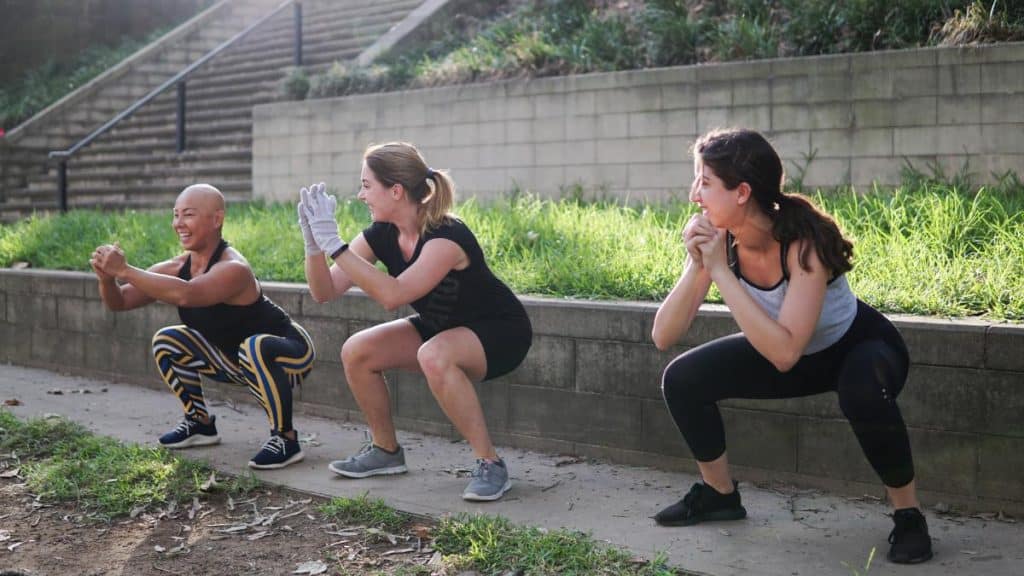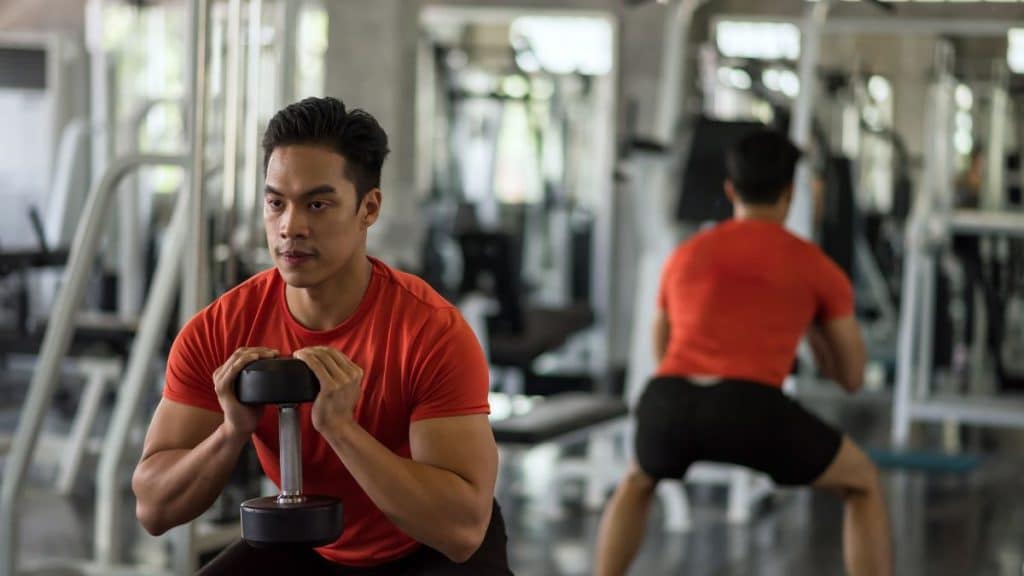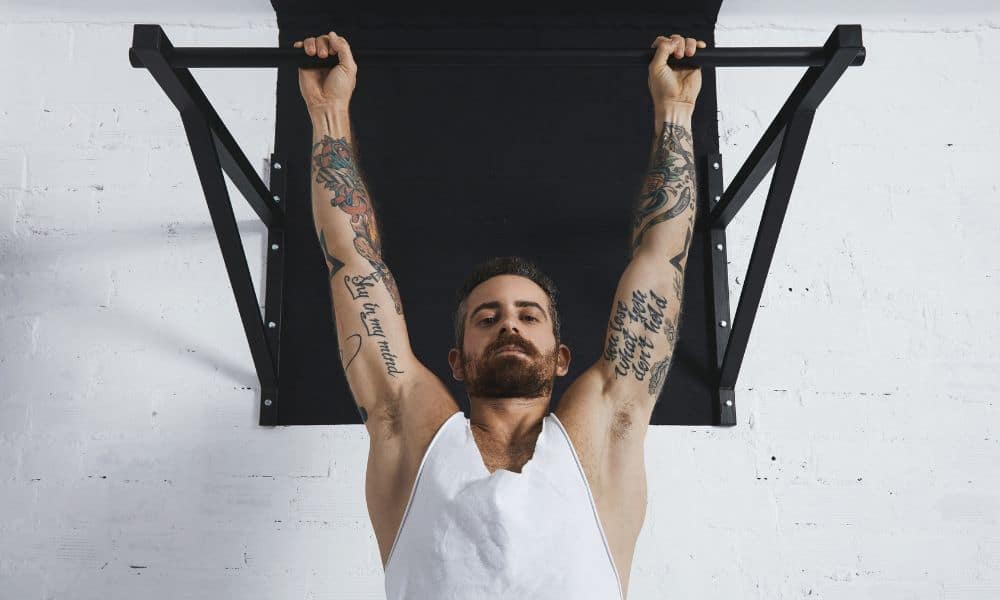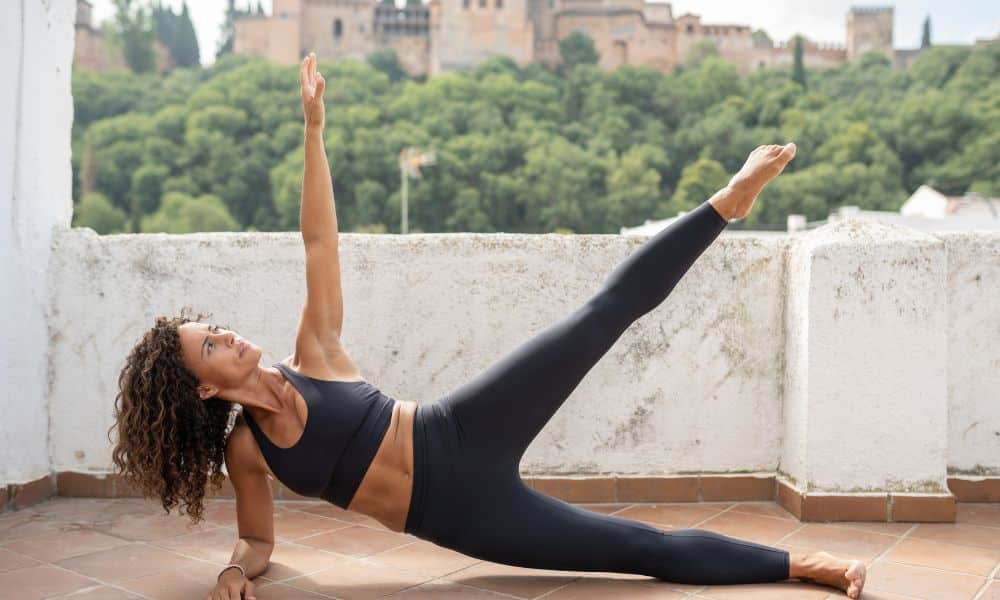Recently, interest in primal movements and exercises that mimic our ancestors’ natural ways of moving has been resurgent. One such exercise that has gained popularity is the primal squat, also known as the Asian, deep, or third-world squat.
This seemingly simple movement offers a myriad of benefits for both physical health and overall fitness. This article will explore the correct technique for performing a primal squat, its numerous advantages, its optimal duration, and adaptations for individuals with medical conditions or poor fitness levels.

How to Perform a Primal Squat
The primal squat is a fundamental human movement pattern that involves lowering your body into a deep squat position with your heels on the ground, your hips lowered, and your chest lifted.
It is a versatile exercise that engages multiple muscle groups, including the quadriceps, hamstrings, glutes, calves, core, and even the upper body to some extent. Here’s a step-by-step guide on how to perform a primal squat correctly:
- Stand with your feet slightly wider than shoulder-width apart, toes pointing slightly outward.
- Slowly lower your body by bending your knees and hips, maintaining an upright posture throughout the movement.
- Keep your heels on the ground and, if possible, lower your hips until they are below your knees. Your chest should be lifted, and your back should remain straight.
- Pause at the bottom of the squat for 30 seconds or more, and then push through your heels to return to the starting position.
The key to getting the most from this or any exercise is to focus on the form, which includes a range of motion, pace, rhythm, and exercise cadence.
Finally, listen to your body as you perform each rep. This means slowing down and pushing until the exercise becomes difficult. The level of intensity will determine the amount of rest and recovery you will need to improve health and fitness.

Benefits of the Primal Squat
Now that you know the correct technique, let’s explore the various benefits of incorporating primal squats into your fitness routine:
- Improved Mobility and Flexibility: Primal squats help to improve joint mobility, particularly in the hips, knees, and ankles. Regular practice can increase flexibility and a more extended range of motion, making daily activities and other exercises easier.
- Enhanced Leg Strength: This exercise targets the muscles of the lower body, including the quadriceps, hamstrings, and glutes. By incorporating primal squats into your workout routine, you can develop stronger and more resilient legs.
- Core Stability: The primal squat engages the core muscles, including the abdominals and lower back, to maintain an upright posture. Strengthening these muscles can improve overall stability and reduce the risk of lower back pain.
- Improved Digestion: The deep squat position achieved in primal squats can aid digestion by promoting optimal bowel movements and reducing the risk of constipation. It helps to relax and stretch the pelvic floor muscles, facilitating healthy digestion.
- Balance and Coordination: Primal squats challenge your balance and coordination, requiring stability and control throughout the movement. Regular practice can enhance these skills, improving performance in other physical activities and sports.
Duration to Perform the Primal Squat
The duration a person should be able to perform a primal squat varies based on individual health and fitness levels.
Regarding health, comfortably holding a primal squat for at least 30 seconds indicates good joint mobility and flexibility. This ability suggests that the individual’s hips, knees, and ankles have a decent range of motion, which can contribute to better overall joint health.
From a fitness standpoint, the duration can be extended to several minutes or more, indicating improved lower body strength, muscular endurance, and stability. However, it’s important to note that everyone’s body is unique, and factors such as age, previous injuries, and individual anatomical differences can influence the duration one can comfortably hold an Asian squat.
It’s crucial to focus on personal progress and gradually work towards longer durations, always listening to your body and avoiding injury.

Adaptations to the Asian Squat
Adaptations can be made to ensure the safe and effective execution of primal squats for individuals with medical conditions or poor fitness levels.
If you have knee issues, listening to your body and avoiding going too low or putting excessive strain on your knees is essential. You can start by performing a partial squat and gradually increase the depth as your strength and mobility improve.
For those with poor flexibility or limited mobility, support, such as holding onto a sturdy object like a pole or a suspension trainer, can assist with balance and stability during the movement. This modification can help you gradually work towards performing unassisted primal squats.
Conclusion
In conclusion, the primal squat is a versatile exercise that offers numerous benefits for health and fitness.
Incorporating this movement into your workout routine can improve mobility, enhance leg strength, develop core stability, promote better digestion, and enhance balance and coordination.
Remember to practice proper form, start with shorter durations, and make adaptations if necessary. Also, you can use a mirror to improve your form and correct any mistakes made with the form when trying to perform the primal squat. Embrace the primal squat and reap the rewards of this functional and empowering exercise.
As with any exercise, it is advisable to consult with a healthcare professional or a qualified fitness instructor before starting a new workout routine, especially if you have any pre-existing medical conditions.
If you or someone you know is looking to improve your health, share this article on Facebook or Twitter so that others can learn more about self-care.




